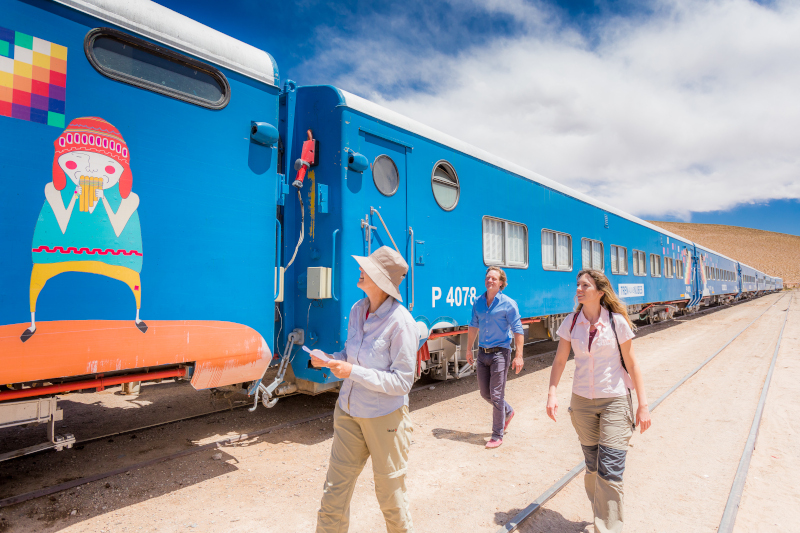In this country, as in others in the Caribbean, cars are driven on the left.

The Argentine province of Salta, in the northwest of the country, boasts one of the most spectacular train rides in the world: the Tren de las Nubes (Train to the Clouds). This railroad can boast of traveling the Andean slopes at an altitude of 4220 meters above sea level at its highest point, making it the third highest train in the world. The sky seems within reach from the carriages of this historic railroad, which represents a true engineering landmark.
In 2021 it was 100 years since the National Government commissioned Richard Maury, an American engineer, with the challenge of designing this railway route, and in 2022 it will be 50 years since the first tourist trip was made. It is pure Argentine history, and it has resisted the passing of the years undaunted. However, it took 27 years to build the 42 stations, 13 viaducts (including the Toro and Polvorilla rivers), 32 steel bridges and 21 tunnels that make up the route, partly due to the military coup that removed the main promoter of the project, President Hipólito Yrigoyen, from the government.
The name of the route also has a curious history, since it was baptized by two cameramen from Tucumán who in the 1960s made the Salta-Socompa stretch on this train, and who intended to make a film of the trip. These students from the National University of Tucumán convinced the engineer so that, when the train reached the Viaducto La Polvorilla, the most iconic point of the trip, the engine would make a lateral steam discharge, so that they could film it from the windows of the carriages. Because of the low temperature, the dust cloud did not dissipate and remained suspended in the air for a few moments. The work done by both cameramen was handed over to the Railroad, which later gave it to journalist Emilio Petcoff, from Clarín newspaper. In charge of writing the script for the documentary, the reporter paid special attention to the cloud of steam that accompanied the railroad for several minutes, so he titled the work 'Tren a las Nubes' (Train to the Clouds).
Majestic and imposing, the La Polvorilla Viaduct is the most spectacular monument along the route, with a length of 223 meters, 63 meters above the ground and at a height of 4220 meters above sea level. At the same time, the route makes several stops in different localities of this ecoregion of the Puna, so that it is possible to know the wonderful and picturesque villages of the area and its museums, handicrafts, landscapes and gastronomy.
Although the railroad trip includes a country breakfast consisting of regional infusions and snacks and an afternoon nosh, it is also worthwhile to enjoy some of the typical dishes of the area. Among these we find the llama, which can be eaten in steak, stew or empanada, semolina tamales or humitas en chala.
The touristic tour chugs off in the city of Salta by bus, and it is in the train station of San Antonio de los Cobres where one embarks on the Tren a las Nubes (Train to the Clouds). The entire journey is accompanied by a guide who explains the history of the train, the towns it passes through and the biodiversity of the region. Some of the sightseeingn spots along the project are the Artisan Market of San Antonio de los Cobres, the town of Santa Rosa de Tastil, El Alfarcito or the San Antonio de Padua Church.
As for the flora and wildlife of the region, it is worth mentioning the birds that inhabit the area, such as the Andean condor, or animals such as the vicuña and the guanaco. Although the trip seems idyllic, it must be taken into account that, due to the altitude at which the train travels, height sickness or 'apunamiento', as it is known there, can appear, which causes headaches and dizziness, so it is important to be prepared with pills for altitude sickness. In addition, the train has a medical service always available for travelers.
The Tren de las Nubes is a perfect option to get to know the landscapes and culture of the province of Salta, as it allows us to be surprised by the colors of the land and the fascinating biodiversity of the area and, ultimately, allows us to immerse ourselves in a journey through the history of the region.

In this country, as in others in the Caribbean, cars are driven on the left.